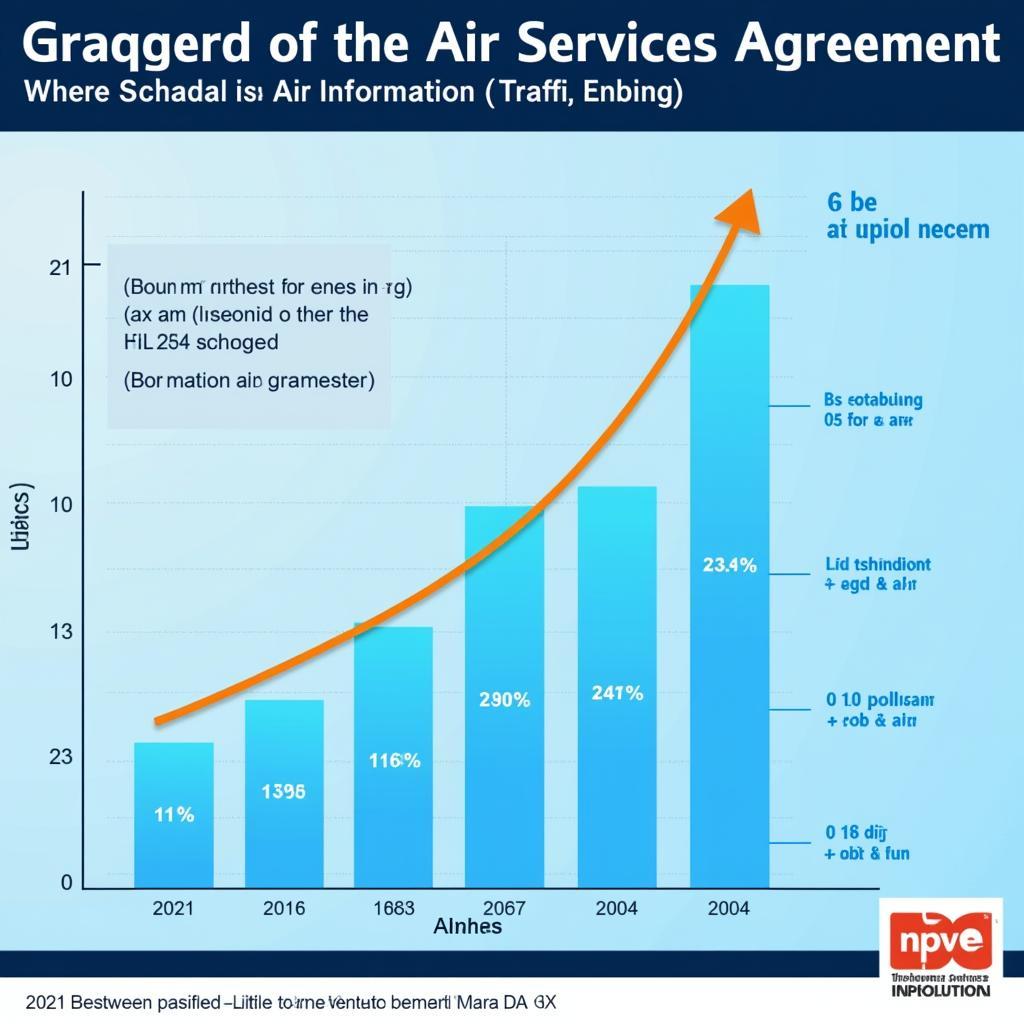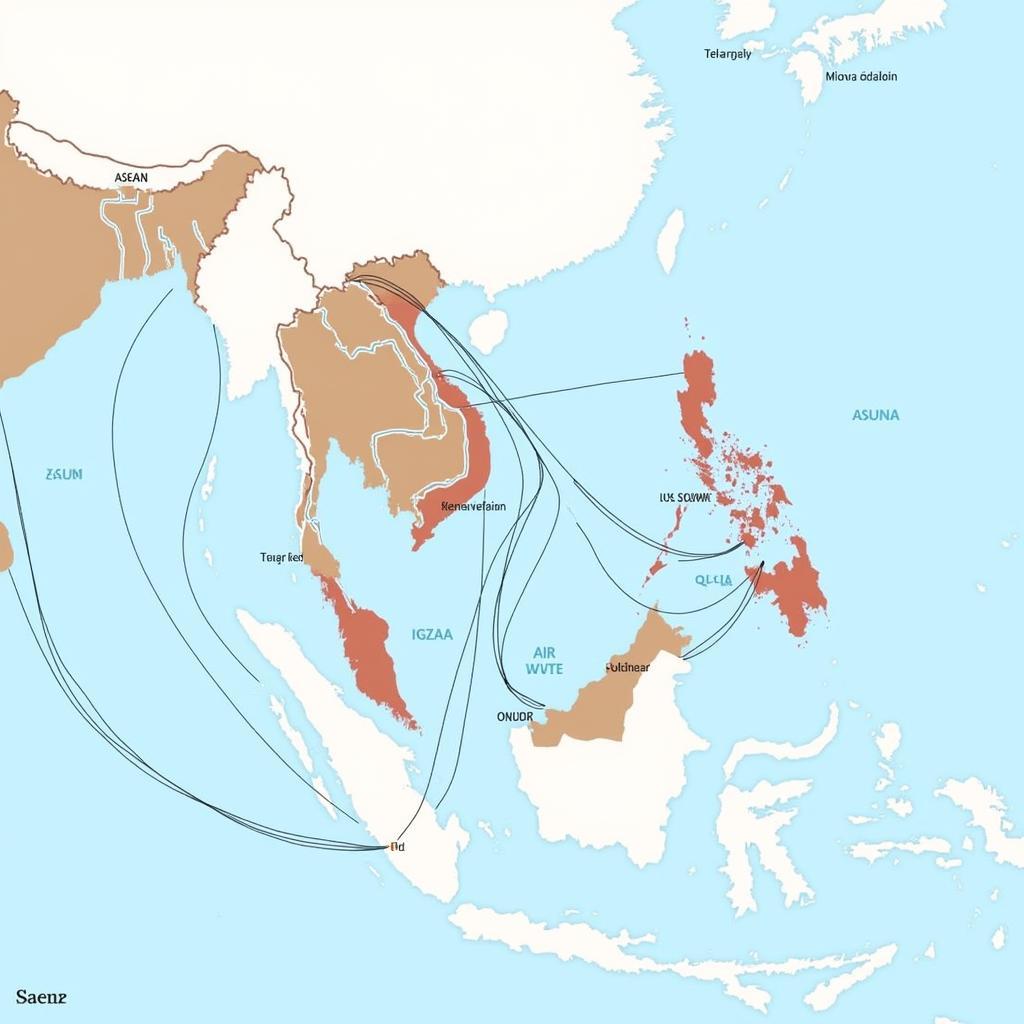The Asean Air Services Agreement (ASA) stands as a testament to Southeast Asia’s commitment to fostering seamless air travel within its borders. This agreement, a cornerstone of ASEAN’s integration efforts, aims to liberalize air services and boost connectivity, benefiting both travelers and the region’s economies.
Opening ASEAN Skies: The Essence of the Agreement
The ASA strives to create a more open and competitive aviation market within ASEAN member states. It achieves this by gradually dismantling restrictions on air routes, capacity, and ownership, paving the way for more flight options and competitive airfares.
Imagine flying directly from Hanoi to Jakarta without the hassle of multiple layovers, or finding budget-friendly flights from Bangkok to Manila. These are just glimpses of the possibilities unlocked by the ASA.
Key Features and Benefits of the ASEAN Air Services Agreement
The ASA’s impact goes beyond just increasing flight options. Let’s delve into some of its key features and benefits:
- Liberalization of Air Routes: The agreement promotes the establishment of new air routes between ASEAN countries, enhancing connectivity and travel options.
- Increased Market Access: Airlines within ASEAN gain greater access to each other’s markets, fostering competition and driving innovation in services and pricing.
- Enhanced Tourism: Easier and more affordable air travel within ASEAN directly contributes to the growth of the region’s vibrant tourism industry.
- Economic Growth: Improved air connectivity facilitates trade, investment, and business travel, stimulating economic growth and development.
- People-to-People Connectivity: The ASA fosters closer ties among the people of ASEAN by making travel more accessible and affordable.
Milestones and Progress of the ASEAN Air Services Agreement
 ASEAN air traffic growth
ASEAN air traffic growth
The journey towards a fully liberalized ASEAN aviation market is ongoing, marked by significant milestones:
- 1995: The initial ASEAN Air Services Agreement is signed.
- 2009: The ASEAN open skies policy, allowing designated airlines unlimited flights between capital cities, comes into effect.
- 2016: The ASEAN Single Aviation Market (ASAM) is launched, further liberalizing air services and aiming to create a unified and competitive aviation market in the region.
Challenges and Opportunities for the Future
While the ASA has made impressive strides, some challenges remain:
- Infrastructure Constraints: Limited airport capacity and air traffic management systems in some countries pose challenges to handling increased air traffic.
- Regulatory Harmonization: Further harmonization of aviation regulations and safety standards across ASEAN is crucial for seamless operations.
- Competition from Outside ASEAN: Competition from airlines outside the ASEAN region requires continued efforts to maintain a competitive edge.
Despite these challenges, the future of the ASA is promising. The continued growth of the ASEAN economy, coupled with the increasing demand for air travel, presents immense opportunities.
ASEAN Air Services Agreement: A Catalyst for Regional Integration
 ASEAN connectivity map
ASEAN connectivity map
The ASEAN Air Services Agreement is not just about more flights; it’s about fostering deeper regional integration. By facilitating the seamless movement of people, goods, and services, the ASA strengthens ASEAN’s position as a globally connected and competitive economic bloc.
The agreement embodies the spirit of cooperation and shared progress that defines ASEAN. As the region continues to integrate and prosper, the ASA will remain a critical driver of connectivity, growth, and opportunity for all.
FAQs about the ASEAN Air Services Agreement
1. Does the ASA apply to all airlines operating within ASEAN?
The ASA applies to airlines designated by ASEAN member states. These designated airlines are granted traffic rights and privileges under the agreement.
2. How does the ASA benefit travelers from outside ASEAN?
The ASA indirectly benefits travelers from outside ASEAN by potentially lowering airfares due to increased competition and providing more flight options to and within the region.
3. What is the role of the ASEAN Single Aviation Market (ASAM)?
The ASAM aims to create a single, unified aviation market in ASEAN by further liberalizing air services, harmonizing regulations, and promoting fair competition.
4. How does the ASA contribute to ASEAN’s economic growth?
By boosting connectivity, the ASA facilitates trade, tourism, and investment, contributing significantly to economic growth and job creation within ASEAN.
5. What is the future outlook for the ASEAN Air Services Agreement?
The ASA is expected to play an increasingly vital role in ASEAN’s future, driven by the region’s economic growth and the continued rise in air travel demand.
Need More Information?
Do you have more questions about the ASEAN Air Services Agreement or other aspects of ASEAN integration?
Explore our website for more insightful articles:
- ASEAN benefits to Malaysia
- ASEAN achievements and success highlights
- ASE categories
- ASE la volume
- ASEAN CASA
For personalized support, contact us at:
Phone: 0369020373
Email: aseanmediadirectory@gmail.com
Address: Thôn Ngọc Liễn, Hiệp Hòa, Bắc Giang, Việt Nam
Our dedicated customer support team is available 24/7 to assist you.

